I’ve just returned from a trip to Nigeria (my very first, in fact). I have long indulged a love affair with Africa which has landed me in a few varied spots around the continent (Egypt, Morocco, Ghana, Mali and Uganda), but Nigeria was a first for me. Setting aside the tales of northern unrest and escalating security concerns, the Nigerian people proved to be a warm and friendly bunch, eager to learn and hungry for information.
I was in-country to attend the 2013 Global Shea Conference, a collection of several hundred stakeholders culled from around the world. From nut gatherers to butter processors and exporters to manufacturers, we chatted all things shea butter for three solid days. My mission in Nigeria was multi-fold: as a beauty entrepreneur (I cut my teeth in business via Bella Lucce, my spa product company) I wanted to support the women who produce shea by spreading their message and arming cooperatives with the information they need to gain access to lucrative Western markets). As a small business consultant (via Lucky Break), I desired to teach key business skills to African entrepreneurs who are getting their legs beneath them. My roles at the event included leading a workshop on product development, sitting on a panel to discuss the needs of western shea buyers, and assisting in a series of soapmaking workshops lead by my friend Stephanie Craig of embodico (in which 120 African women made their very first batches of soap!).
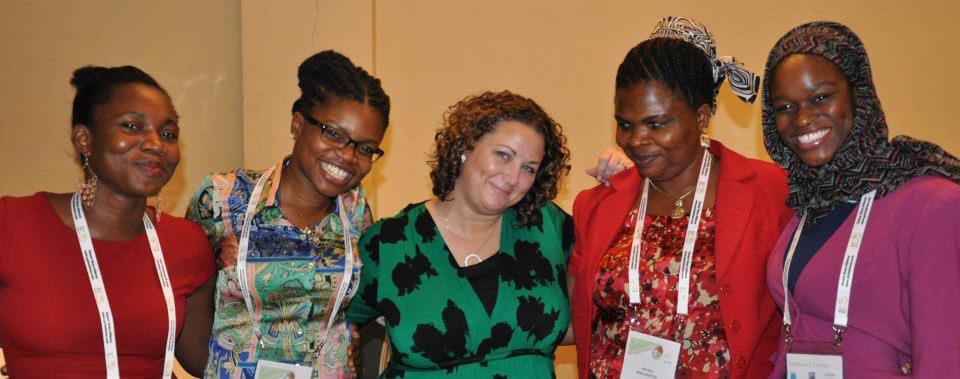
I first attended a Global Shea Conference in 2010 in Mali. In both Nigeria and Mali, the highlight of the event was a trip to visit local shea cooperatives. Though I have marveled at the shea-making process in three separate countries, I am awe-struck each time I have the opportunity to witness it anew. The rhythmic kneading process is a dance of cooperation. The flow of each step well-defined, almost intuitive. This is the story of empowerment. Of African women preserving an indigenous art. A tale of sisterhood in the hot African sun as these women create economic opportunity for their families.
Shea trees grow in seventeen African countries in a wide swatch of the continent. They are beautiful creatures with flowers and fruit in season. They drop ripe fruit to the ground in due time and the collection of those fruits by local women (usually in baskets or gourds) is the first step in a long process from fruit to butter.
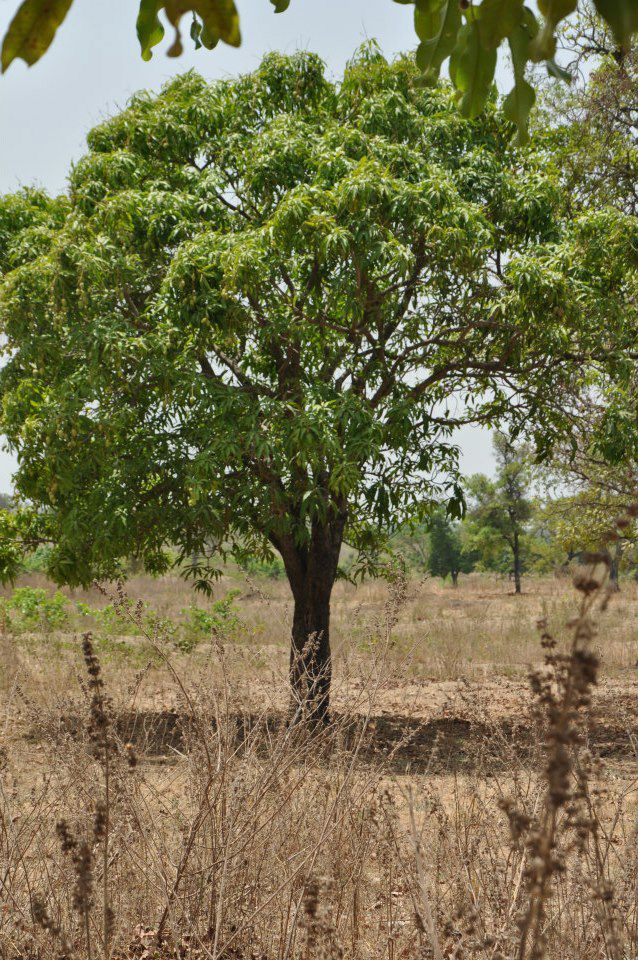
The fruits (green and round with a unique taste) are promptly depulped by hand or by animals. The large nuts within are then boiled for 20-40 minutes to stop the germination process. Shea butter is made from the natural fats within the nut and those fats are consumed as the nuts germinate. The boiling process halts germination, preserving the fats and boosting butter yield. The boiled nuts are then left to dry naturally in the sun, often on concrete slabs or woven mats.
After a few days of sunbathing, the nuts are dehusked to remove their thin shell. Each specimen is then sorted and graded according to quality. Throughout the drying process, the nuts are continually inspected by the women, who pluck from the batch any nut that’s not up to snuff. The dried, shelled nuts are then bagged in large sacks (preferably burlap, which allows them to breathe and prevents moisture buildup) and put to sleep to await further processing.
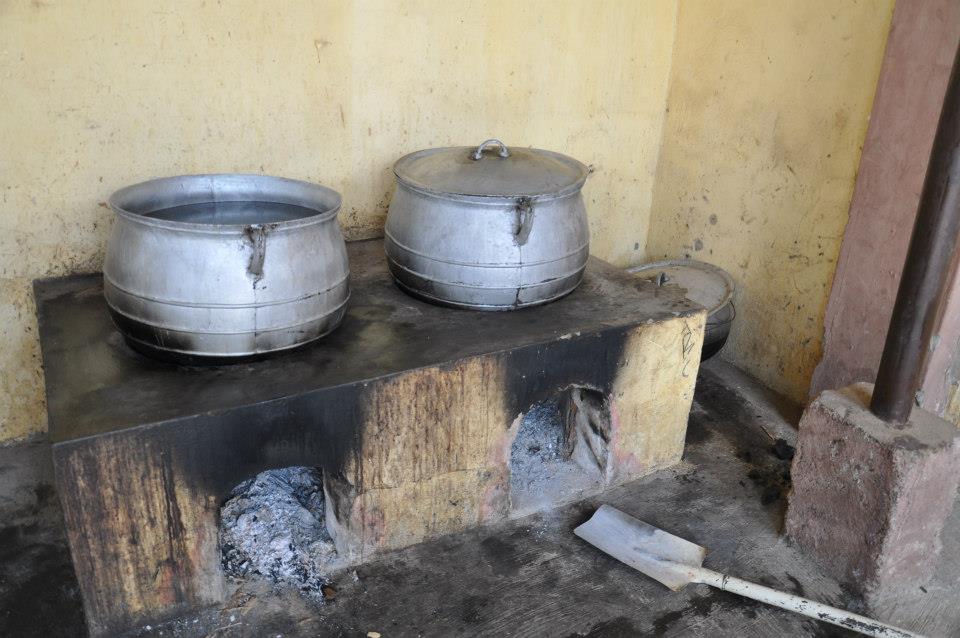
When the time is right for processing, the nuts spill from their bags before being crushed (either by hand or simple machinery) to create a coarse powder which is roasted over a flame. The day that I visited this particular cooperative, the mercury in Abuja topped 108. One hundred and eight. Can you imagine manual labor, open flames and triple digit temperatures? Mercy. Mercy and much respect. The roasting process accomplishes several goals: a) it renders lifeless fungi that might be present, b) it evaporates any remaining moisture, and c) it denatures the cell walls to prepare the nuts for milling.
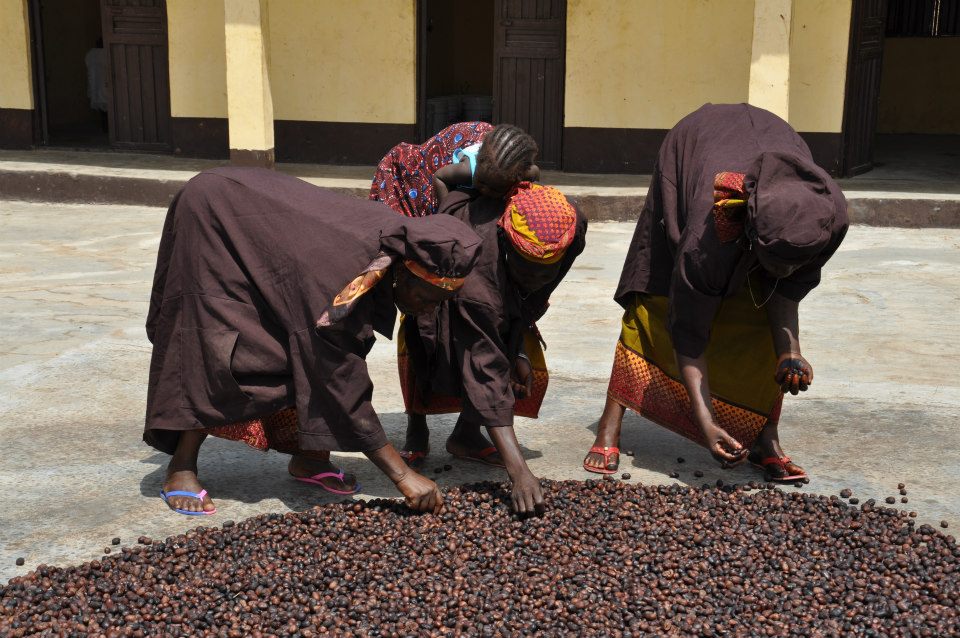
After a quick mechanical milling, the dry, roasted nuts are now in powdered form and the action really heats up. The next step is the emulsification of the butter, a process that involves the addition of fresh water and lots of elbow grease. The nuts contain natural emulsifiers, released via sheer will and friction. The women (who must have the softest hands on the planet) rhythmically knead the butter, adding more water as necessary until the fats are fully formed.
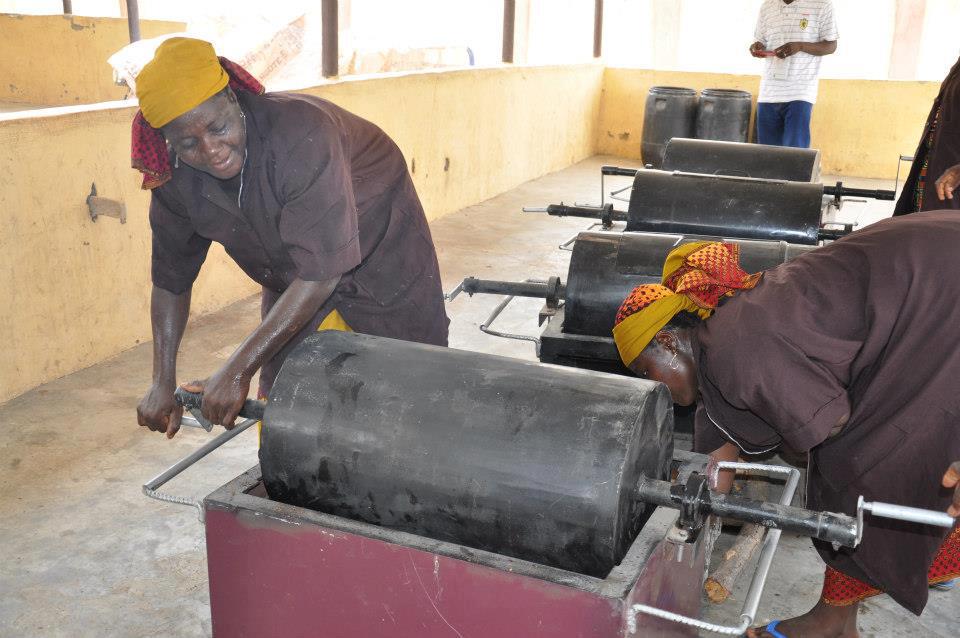
Each tub of butter is hand-kneaded, often in unison by a row of women whose rhythmic massaging resembles a dance. It is a beautiful and humbling sight to behold. Sometimes there is singing. Often there are babies strapped to backs. Oh, how I adore women! The kneading process can take up to ninety minutes with poor quality nuts, though a good batch of nuts can yield shea butter in around a third of that time.
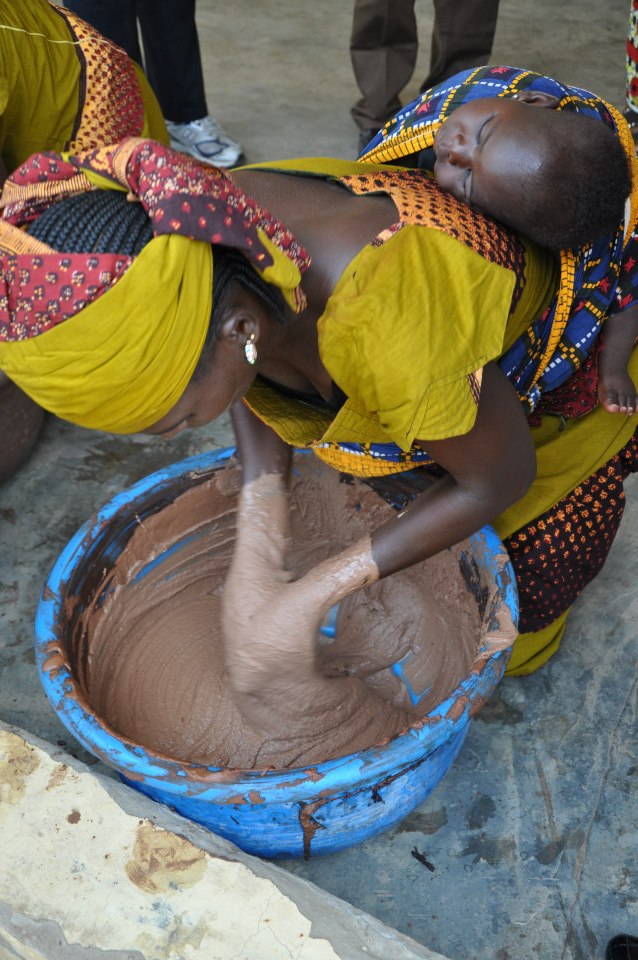
The butter, now in liquid form, is boiled over an open flame in a large iron pot. This process clarifies the shea, after which it’s left to cool. The result is a solid, creamy butter that is utter magic for the skin. The shea at this stage is considered “unrefined.” The more refined variety involves further processing at a larger, more sophisticated facility (typically located outside of Africa).
I asked my friend, Dr. Peter Lovett (considered by many to be the world’s preeminent shea expert) about the origin of shea. It’s impossible for me not to ponder that question as I stand transfixed by the rhythmic kneading. I mean: who was the first to figure this out? Here was his answer:
“This is an academic discussion. At least 1,500 years of shea parklands are proven with archaeological evidence, but could be much earlier as evidence is appearing demonstrating up to 7,000 years of cultivation in the Sahel-Savannah. There is also growing evidence that the Ancient Egyptians were using shea butter and wood as far back as 5,000 years ago, but as yet, evidence is unconfirmed. Could even be much further back…”
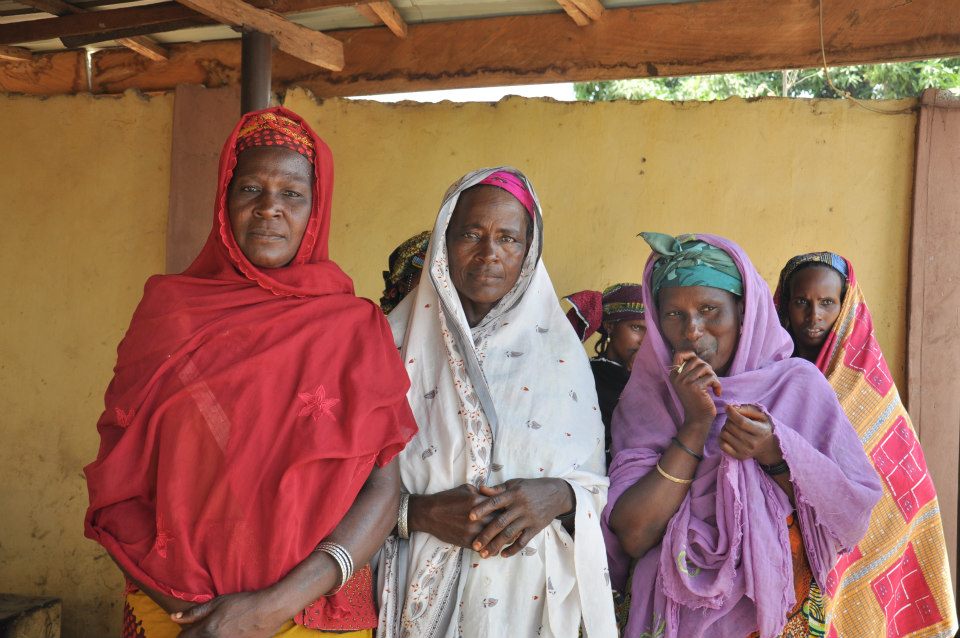
Amen to girl power. Amen to Africa. Amen to Mother Nature. Amen and amen. And that, my friends, is how shea is born.






Thank you so much for sharing this. I sometimes wonder if the decisions I make concerning my ingredient choices really matter to anyone else but me. Thank you for reminding me that it matters to many, many people.
I hear ya Janis! It’s so easy to feel disconnected from our supply chain. But it’s true that our sourcing makes more of a difference than any of us can imagine. Here’s an article in this week’s Guardian that might be of interest.
http://www.guardian.co.uk/sustainable-business/direct-trading-coffee-farmers
“If companies really want to make a difference in the developing world, it’s time to go beyond fair trade and get involved with farmers directly.”